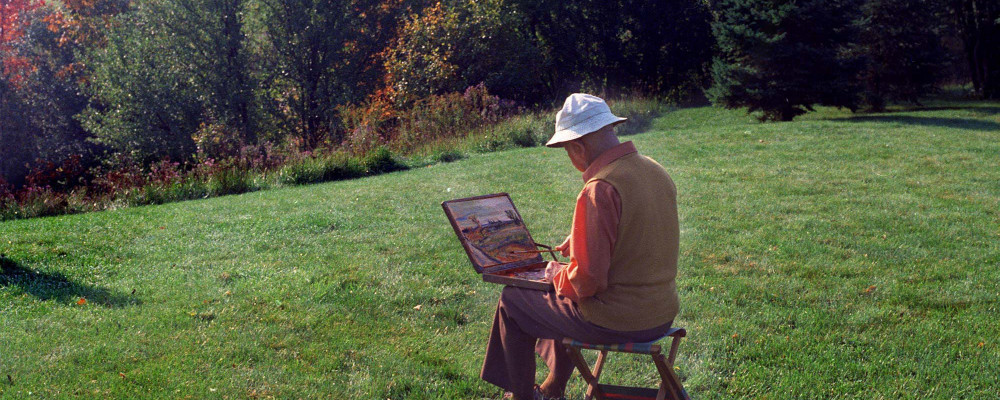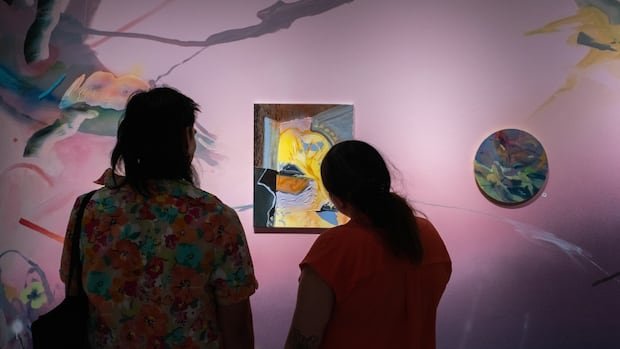The Hub is pleased to present a weekly column from author and historian Antony Anderson on the week that was in Canadian history.
May 7-27, 1920: The Group of Seven holds its first-ever exhibition
In May 1920, the world was, as always, a busy place. The triumphant allies of the recent European bloodbath were carving up and remaking the defeated Ottoman empire into a cluster of countries called the Middle East. The British had maneuvered backstage to ensure they would administer the portion hived off as the Mandate of Palestine. The Canadian government was presenting a report to the House of Commons and Senate concerning its fledgling personal income tax program, brought in during the Great War to help finance the conflagration. American and British officials, it was noted, had praised the Canadian tax form for its simplicity. People in Toronto were debating whether they would stick with daylight savings time. Drivers going over 30 miles an hour in the city would now be charged with reckless driving.
On page three of the May 7th edition of The Toronto Daily Star, a small headline noted, “Seven Painters Show Excellent Work: Fine Portraits, North Country Views, and Winter Scenes are Depicted.” The exhibit displayed 114 sketches and paintings, all Canadian landscapes. The seven painters were Frank Carmichael, Lawren Harris, A.Y. Jackson, Frank Johnston, Arthur Lismer, J.E.H. MacDonald, and Frederick Varley. (There were also three painters from Quebec and the members would change but I dare not digress).

Unknown to the public at large and to the miniscule Canadian art world, many making their living as commercial designers, they proclaimed themselves the Group of Seven, and for this, their first joint exhibit, they produced a small catalogue pulsing with astonishingly grand ambitions.
Imbued with the essential egotism if not narcissism needed to get an artist out of bed in a typically indifferent world, the group declared that “they do most emphatically hold that their work is significant and of real value to the country.” They were painting and sketching not just for themselves but for the young Dominion, then in the throes of self-discovery.
Canada had made a formidable military contribution in the recent war enabling Prime Minister Sir Robert Borden to demand equality of status with the Mother Country. Canada would now field its own diplomats, take its own seat at the League of Nations, and essentially start to speak for itself on the world stage. (Of course, this being Canada, staunchly loyal to the Empire, there was a fair bit of muddle and haze in this progression). Nonetheless, Canada glowed with promise, if with no clear identity.
In this exciting vacuum, the Group of Seven told one and all of their conviction “that an Art must grow and flower in the land before the country will be a real home for its people.” Here was a group of artists, consciously Canadian, painting for Canadians, and striving, as the late great Robertson Davies would later say about himself, to forge the soul of their nation in the smithy of their work. They expected to encounter “ridicule, abuse or indifference” and indeed some had already been dismissed by one reviewer as belonging to the “Hot Mush” school of art.
They knew they must invariably confront “so-called Art lovers” who saw art as mere commercial transaction, soulless purchases, based on an “imported standard of the picture-sale room.” The Group of Seven painted emotional landscapes rather than straightforward, comforting reflections. In the face of barren cultural terrain, these painters would put their faith in and would speak to those Canadians who realized, “that the greatness of a country depends upon three things: ‘its Words, its Deeds, and its Art.’ Recognizing that Art is an essential quality in human existence they will welcome and support any form of Art expression that sincerely interprets the spirit of a nation’s growth.”

It’s all so terribly romantic and optimistic, especially in contrast to our age of indignant statute topplers and self-righteous name vandals who amplify a deep current that sees Canada itself as immoral, illegal, and illegitimate.
As cultural historian Jamie Bradburn points out in his excellent piece on the exhibit, reactions were more complicated than perhaps even the group itself seemed to remember. Only two sketches were sold, both by Frank Carmichael, so clearly the 2,100 visitors were not overly inspired to own examples of this new vision of Canada. And one review, as the Canadian Encyclopedia notes, compared the paintings to “the contents of ‘a drunkard’s stomach.’” These insults stand out in their retelling. However, the group had its champions as well. There were good reviews in various newspapers and the National Gallery of Canada bought three paintings and would later include Group of Seven works in traveling exhibits to the United States and Great Britain.
Despite individual examples of rudeness from their fellow Canadians, the Group of Seven caught, amplified, and embodied the wave of postwar Canadian nationalism just as it was building, and soon enough they would evolve from irritating, confounding iconoclasts to the dodgy status of “national treasure” before becoming cliches inflicted on generations of indifferent school children— almost cultural white noise.
To my amateur eye, I don’t see them now as formal innovators as they were following in the wake of the truly innovative magic created by the French impressionists, but who cares who did what first? They did their work here for Canadians and that was radical enough. Fortunately, that work would transcend fleeting ideological imperatives, the nationalism properly becoming a side note. The masterpieces endure. You forget how incredible some of the work is until you are standing before an actual physical canvas, immersed in those vivid, impassioned brushstrokes and colours that no reproduction in a book or screen can capture. And then you can marvel that it happened here, by us, for us.






